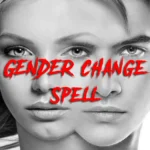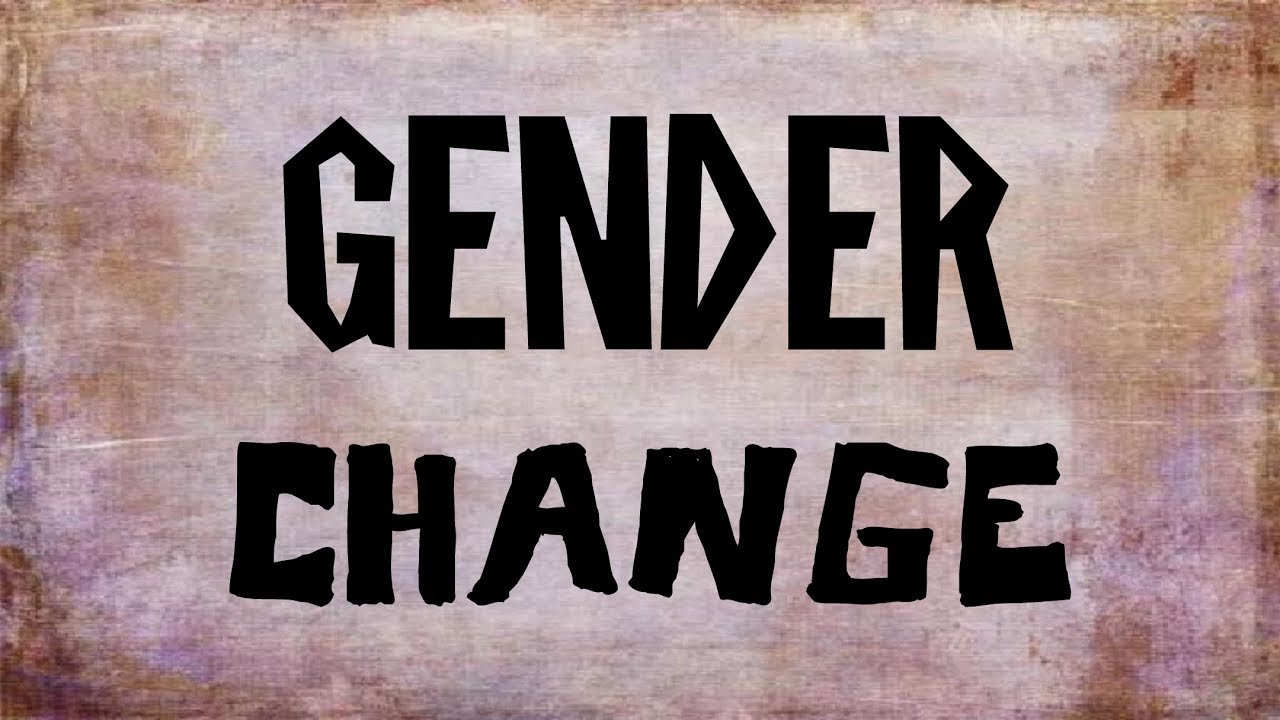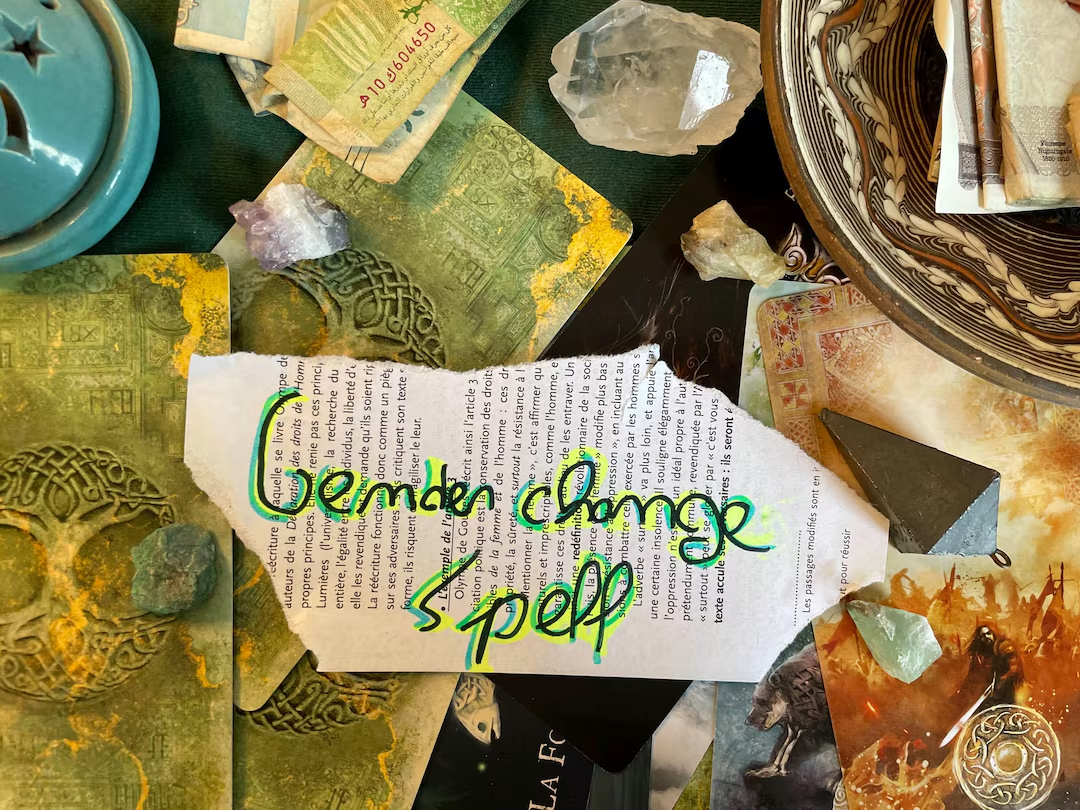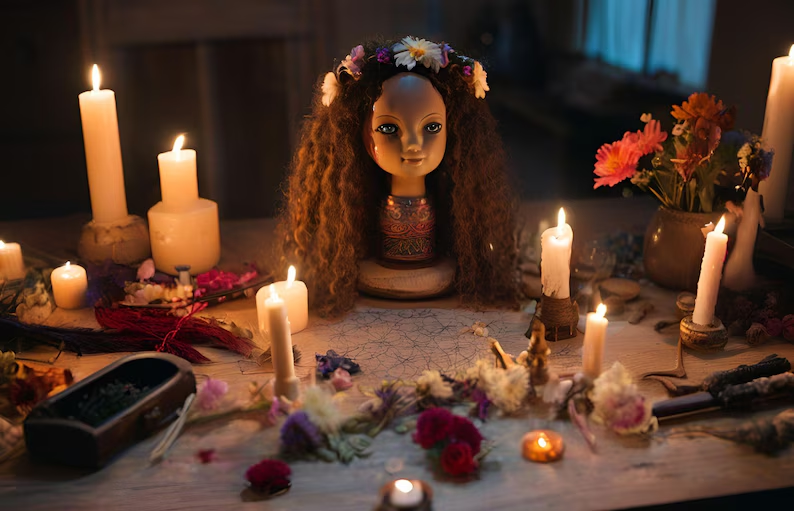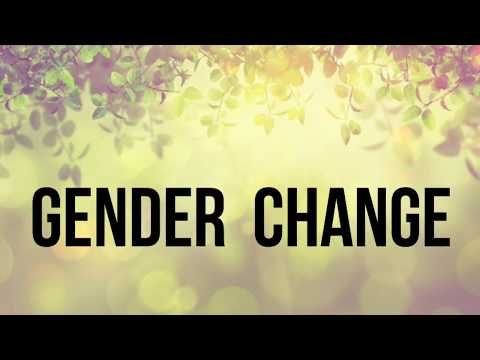Introduction to Transformation Spells
Transformation spells, particularly those aimed at gender change, represent a fascinating intersection of magic, identity, and desire. Throughout history, various cultures have integrated the concept of transformation into their magical practices, often aiming to alter one’s physical appearance or essence. From ancient mythologies that feature deities capable of shape-shifting to modern magical traditions that embrace the fluidity of identity, the allure of transformation has persisted. These spells often reflect societal views on gender and identity, drawing upon a rich tapestry of folklore and cultural narratives.
In many spiritual and magical contexts, transformation spells serve multiple purposes. For some individuals, they represent a path towardself-actualization, allowing a person to embody their true identity. In contrast, other practitioners may seek transformation spells for recreational or exploratory reasons, embracing the novelty of change. This desire for change can stem from a variety of motivations, including personal self-expression, exploration of femininity or masculinity, or even a quest for empowerment. The nuances of these motivations demonstrate how deeply personal and varied the inclination towards transformation can be.
The significance of transformation spells can also be seen through their representation in various magical traditions. For instance, in Wicca, spells that promote personal transformation and self-discovery are commonly practiced. Similarly, practitioners of folk magic and contemporary witchcraft often cite transformation spells as essential tools for aligning their outer selves with their inner truths. In these traditions, the invocation of energy, intention, and symbolism plays a crucial role, creating a rich environment for practitioners to explore their desires and aspirations. Transformation spells thus encapsulate a broader discourse on identity, the self, and the possibilities of change within the human experience.
Understanding Gender and Identity
The concepts of gender identity and expression are multifaceted and deeply intertwined with societal norms and cultural practices. At its core, gender identity refers to an individual’s personal sense of their gender, which may or may not align with their biological sex as assigned at birth. Biological sex, typically categorized as male or female, encompasses physical attributes like chromosomes, hormone levels, and reproductive/sexual anatomy. However, gender identity transcends these biological classifications, as it is shaped by a person’s lived experiences, social interactions, and internal self-perception.
Societal norms play a significant role in how femininity and masculinity are perceived and expressed. Historically, these constructs have imposed rigid expectations on individuals based on their assigned gender at birth. For instance, societal views often dictate that women should embody qualities such as nurturing, gentleness, and emotional expressiveness, while men are expected to demonstrate strength, assertiveness, and emotional restraint. Such stereotypes can limit personal freedom and can adversely impact mental health for those who do not conform to these traditional roles.
Respecting individual identities is paramount in promoting inclusivity and understanding within society. Language serves as a powerful tool in this regard; the terms individuals choose to describe their gender identity should be honored and employed. Using correct pronouns and names can significantly affirm a person’s identity and contribute positively to their overall well-being. Furthermore, the visibility and representation of diverse gender identities in cultural discussions and media play a crucial role in normalizing different experiences and challenging existing norms.
In exploring the subject of gender identity, it is imperative to recognize the fluidity and variability inherent in how individuals experience their gender. An acceptance of this diversity fosters a more compassionate and inclusive society, paving the way for deeper understanding and respect across the spectrum of gender identities.
The Origin of the ‘Turn Me Into a Woman’ Spell
The ‘Turn Me Into a Woman’ spell has a complex and varied origin, steeped in cultural folklore and historical narratives. Transformational spells have been a hallmark of many cultures, reflecting humanity’s fascination with identity, gender, and the mystical powers believed to reside within magical practices. In ancient societies, rituals aimed at transformation often served to explore the fluidity of gender roles and the societal expectations surrounding them. From the Celtic legends featuring shape-shifters to the diverse array of shamanistic traditions, the theme of transformation has historically held both spiritual and practical significance.
Myths related to transformation, particularly regarding gender, can be traced back centuries. In many cultures, stories of individuals who magically changed their gender often symbolized deeper social commentaries on the nature of existence and identity. Greek mythology, for instance, introduces us to characters like Tiresias, who experienced life as both a man and a woman, emphasizing the idea that gender is not merely a binary construct but rather a spectrum. These tales resonated in literature and folklore throughout history, illustrating societal attitudes toward femininity and masculinity.
With the advent of modern media, the portrayal of spells and transformations has evolved, reflecting contemporary sensibilities and debates surrounding gender identity. Literature, film, and television frequently echo themes akin to the ‘Turn Me Into a Woman’ spell, whether in the context of fantasy or drama. These portrayals often address the struggles individuals face regarding their gender identities and societal acceptance, thereby influencing public perceptions and understanding of transformation rituals. Although the portrayal of such spells may sometimes veer into sensationalism, they inevitably contribute to ongoing discussions about gender and identity, highlighting the rich tapestry of cultural narratives around transformation.
Types of Transformation Spells
Transformation spells encompass a wide array of practices and methodologies aimed at altering a person’s physical, mental, or spiritual state. Among the various types of transformation spells, those specifically designed for gender transformation have garnered significant attention. These spells can be classified into several categories, based on the techniques employed and the cultural context from which they arise.
One prominent method used in transformation spells is herbalism. Various herbs are believed to carry unique spiritual properties and can facilitate changes in one’s identity. For instance, certain herbs might be used in potions or teas that are intended to invoke desired traits or physical characteristics associated with a different gender. Common herbs utilized in this context could include rose petals for femininity or yarrow for strength, depending on the goals of the practitioner.
Rituals are another integral component of transformation spells. These rituals may involve specific incantations, movements, or ceremonies designed to harness spiritual energies for transformation purposes. Many cultures have their own unique rituals, such as the use of ceremonial dress or sacred objects, that play a significant role in the process. For example, some may incorporate elements from ancient traditions, blending historical practices with modern intentions to create a potent transformative experience.
Charms and talismans represent yet another avenue for transformation. These items are often infused with specific energies or intentions and are worn or carried by individuals seeking change. The significance of each charm can vary widely, with many being culturally specific and steeped in tradition. For instance, a charm crafted from tiger’s eye is thought by some to bolster confidence and assertiveness, which may align with one’s gender transformation journey.
Through exploring these various methods, it becomes evident that transformation spells offer a multifaceted approach to personal change. Each practice reflects the beliefs and values of the cultures from which they originate, providing a rich tapestry of options for those interested in exploring their identity through spellwork.
Realism and Limitations of Magic
Magic, particularly in the realm of transformation spells such as the ‘Turn Me Into a Woman’ spell, often attracts fascination due to its inherent promise of change. It is crucial, however, to address the realism and limitations associated with such practices. The effectiveness of these spells is deeply intertwined with elements of belief, intention, and psychological factors rather than a strict adherence to physical transformation.
At its core, magic is typically viewed through the lens of personal belief. The mindset of the practitioner plays a vital role in how spells and rituals are perceived. When individuals engage with these practices, they often do so with the hope that such rituals can catalyze significant changes in their lives. This expectation can, in turn, influence their actions, decisions, and overall outlook. For instance, individuals might experience a heightened sense of empowerment or motivation to pursue their goals following the performance of a spell. In this way, while the physical transformation desired by the practitioner may not occur, the ritual can inspire a psychological change that impacts their life course.
Furthermore, the limitations of magic are evident when considering the laws of nature. No spell can physically alter a person’s biology or identity beyond what is already possible through natural means. The notion of spells causing definitive physical changes is generally rooted in myth. While practitioners may feel a shift in their identity or experience enhanced self-acceptance, the tangible outcomes often remain elusive. Thus, it is important for individuals exploring these magical practices to approach them with a grounded understanding of their potential. Spells can serve as catalysts for self-reflection and personal growth, but they cannot replace the complex processes involved in real-world transformation.
Ethical Considerations in Using Transformation Spells
The use of transformation spells, particularly those aimed at changing one’s gender identity, raises significant ethical considerations. Central to these discussions is the concept of consent. Transformation spells should never be employed on individuals without their explicit agreement. The practice of casting spells that influence personal identity can infringe upon a person’s autonomy and self-determination, leading to potential harm and exploitation. In an era that values respect for individual rights, it is crucial to approach such powerful tools responsibly.
Personal agency is another critical factor in the ethical discourse surrounding transformation spells. Individuals have unique identities and experiences that shape their understanding of gender. When considering the use of transformation spells, it is essential to recognize and respect an individual’s right to determine their own gender identity. Engaging in magical practices that alter this identity, particularly without thorough consideration and open dialogue, can undermine the individual’s sense of self and autonomy.
Additionally, one must contemplate the broader implications of using transformation spells within various cultural contexts. Ethical engagement with transformation practices demands sensitivity to how such spells may affect those within marginalized communities. It is imperative to consider the potential reinforcement of stereotypes or the possibility of appropriation of cultural practices without understanding their history and significance. Thus, practitioners are advised to engage with transformation spells thoughtfully, ensuring that their motivations align with a genuine respect for diversity and inclusion.
Ultimately, engaging in discussions about gender transformation spells requires mindfulness and respect. It is essential for those involved in such practices to create an environment where diverse identities can be affirmed and celebrated. In conclusion, the ethical implications of using transformation spells are complex and necessitate careful reflection, emphasizing respect for consent, personal agency, and the integrity of individual identities.
Personal Experiences with Transformation Spells
Throughout history, individuals have sought transformation spells, driven by varied motivations ranging from personal growth to a desire for physical change. Many who have engaged with such spells often report their experiences with a mix of anticipation and skepticism. For instance, Alex, a long-time practitioner of magic, described casting a transformation spell to feel more connected with their gender identity. After extensive research and preparation, Alex conducted a ritual that involved visualization and affirmations. They reported a profound sense of self-acceptance following the spell, believing it helped align them closer to their true self.
On the other side of the spectrum, Jessica shared her experience with transformation spells that did not yield the results she anticipated. Initially excited, she followed a traditional ritual passed down from her grandmother, intending to enhance her femininity. After weeks of commitment, Jessica expressed disappointment as she felt no significant changes occurred. This led her to conclude that while transformation spells can be deeply meaningful, the outcomes are highly subjective and may not always align with expectations.
Another account by Martin illustrates how the emotional connection to the spell influenced the outcome. Martin, who was skeptical but curious about the possibilities of transformation spells, was intrigued by the concept of personal transformation. He joined a community workshop focusing on empowerment spells. The experience fostered a sense of community and self-awareness for Martin, highlighting that transformation is often more about inner change than outward manifestations. For him, the spell served as a catalyst for reflection rather than a direct means of physical transformation.
These personal narratives underscore the multifaceted nature of transformation spells. They showcase that motivations, rituals, and interpretations can vastly differ, revealing not only the hopes individuals have but also the complexities involved in the practice of transformation magic. By sharing these diverse experiences, we can appreciate the broader implications of such spells in personal journeys toward self-discovery and acceptance.
How to Safely Explore Transformation Magic
Engaging with transformation magic, such as the “Turn Me Into a Woman” spell, requires careful and respectful consideration. Before delving into any spellwork, it is crucial to conduct thorough research. Understanding the historical, cultural, and spiritual context of the magic you intend to practice can mitigate misunderstandings and potential misappropriations. Seek out reputable sources—books, articles, and experienced practitioners can provide invaluable insights into the complex nuances of transformation spells.
Preparation is another essential aspect of safely exploring transformation magic. Begin by identifying and gathering the necessary tools and materials that might be required for your practice. Whether these are physical items like crystals or herbs, or intangible aspects such as your mindset, ensuring you are well-prepared will create a more conducive atmosphere for your spellwork. Additionally, consider creating a dedicated space for your practice. This may involve setting up an altar or finding a quiet area where you can focus without distractions.
Equally important is reflecting on your motives for exploring transformation magic. Take time to journal or meditate on your desires and intentions. What do you hope to achieve with spells of this nature? Being clear and honest with yourself about your motivations can help you to avoid potential pitfalls and engage in meaningful practice. Mindfulness, in this context, becomes a guiding principle. Approach your magical practice without haste or expectation, allowing yourself to truly experience the transformative energy.
Furthermore, it is vital to consider the ethical implications of your work. Transformation magic can be powerful, and it is essential to respect the autonomy of individuals and the energies involved. Establish your own ethical framework for your practice, which will provide guidelines for making conscious and respectful choices.
Conclusion: The Journey of Self-Expression
Throughout this exploration of the ‘Turn Me Into a Woman’ spell, we have delved into various aspects surrounding the practice, uncovering myths, realities, and the ethical considerations that underpin such transformative rituals. The fascination with spells and magical practices often stems from a deep-rooted human desire for personal transformation and identity exploration. The journey towards self-expression is not limited to any one method; rather, it encompasses a spectrum of practices that facilitate the discovery of one’s authentic self.
Identity is a complex construct influenced by numerous factors, including cultural, social, and personal experiences. As individuals, we may seek different avenues for self-exploration, whether through magical means, art, or personal relationships. The ‘Turn Me Into a Woman’ spell symbolizes not only a desire for physical transformation but also a deeper longing for recognition and acceptance of one’s true identity. It invites individuals to reflect on the aspects of themselves they wish to express and the societal standards they are navigating.
While engaging with such practices, it is crucial to approach them thoughtfully and critically. Conversations surrounding gender identity and personal transformation can serve as pivotal points for broader discussions about inclusivity, acceptance, and the myriad ways people can experience and express their identities. As we conclude, we encourage readers to consider their own journeys of self-expression. Whether through magical practices or alternative forms of creative expression, the exploration of identity is a profoundly personal endeavor that warrants respect, understanding, and open dialogue.




